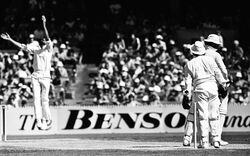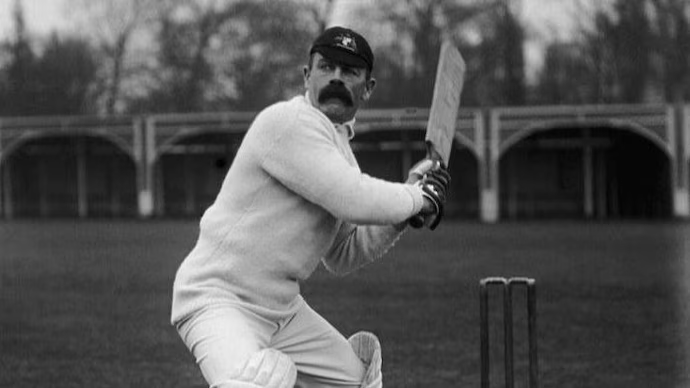Top 10 Essential Test Cricket Rules Every Fan Must Know [Ultimate Guide]
By Tanish |
Date 2024-12-10
![Top 10 Essential Test Cricket Rules Every Fan Must Know [Ultimate Guide] Cricket Rules](/_next/image?url=https%3A%2F%2Fcdn-cms.orchidsinternationalschool.com%2Fmedia%2Fblog%2Fcricket-rules.webp&w=1920&q=75)
Table of Contents
Admissions Open for
Test cricket is one among the several and most esteemed forms of cricket, which dates back centuries. Played over five days, it is known for its depth, strategic complexity, and team endurance as well as for its intensity. The rules of Test Cricket matches are quite important to understand the game better and enjoy it truly. This article will help you to clearly grasp how the game is conducted at the highest level by dissecting the main rules and regulations controlling Test cricket.
Definition of Test Cricket
The Match in test cricket usually Lasts for up to five days, it is the longest form of game in the cricket. Test cricket is a real test of abilities, stamina, and strategy unlike One-Day Internationals (ODIs) or Twenty20 (T20), whereby both teams can bat and bowl twice. Every day of a Test match consists of a maximum of 90 overs, or 540 balls, and is usually played on a ground that changes throughout the match, so posing fresh difficulties for players.
Test cricket: Game of Patience and Bravery.
A Glimpse of what Test cricket is in reality
Key Rules of Test Cricket Matches
Given Below are some of the rules of a Test Cricket Match:-
1. Match Organization and Length
A Test cricket match is played for five days, with each day consisting of six hours of play. There are three sessions to the day: morning, afternoon, and evening; each lasts roughly two hours. Each team rotates between batting and bowling, with both teams having two innings. The team that runs the most following both innings wins the game. Though it takes more time, test cricket provides a special strategic depth absent in lesser forms.
2. Overs for Test Cricket
In Test cricket, each over consists of six legal deliveries from a bowler. A total of 90 overs are bowled each day, with each team bowling as many overs as needed to dismiss the opposition. Every team counts their overs separately, and every bowler is let to bowl as many overs as per wish in a day. This basically depends upon the stratergy of the team.
3. Toss and Batting Order
The match begins with a coin toss to determine which team will bat or bowl first. Depending on the weather and pitch conditions, the captain of the winning team chooses whether to bat or bowl, therefore influencing the game. Conversely, the batting order is decided before the game begins and the top-order batsmen deal with the opening bowlers. Unlike ODIs or T20s, this style of the game is slower and more deliberate, which makes it an interesting test of both team and personal ability.
4. Innings and Dismissals
Every team competing in a test match has two innings. In Test cricket, dismissals can be bowled (when the ball strikes the stumps and dislodges the bails), caught (when a fielder catches the ball struck by the batsman), or leg before wicket (LBW) should the ball strike the batsman's leg in line with the stumps. Other dismissals, which accentuate the game's tension, include running out or stumping.
Want to know more about LBW, do check out some LBW Rules....
5. Fielding Limitations and Approach
Unlike ODIs or T20s, Test cricket doesn’t enforce tight fielding limits. There are guidelines, though, that restrict the number of fielders allowed in particular spots. For the first ten overs, for instance, just two fielders can be positioned behind square on the leg side. The fielding team can then more freely arrange its players, but no more than five fielders can be on the leg side at any one moment. This provides bowlers and captains great tactical freedom to create fields and plan for several phases of the game.
Know More about Fielding Rules in Cricket...
6. The Role of Umpires
In Test cricket, two on-field umpires are responsible for making key decisions, including evaluating dismissals like LBW, caught, and bowled. They also supervise fair play, therefore guaranteeing that the match is conducted according to regulations. Sometimes a third umpire watching replays on television could help with tricky judgments. The result of the match depends much on umpires since they help to preserve the integrity of the game and guarantee flawless flow.
7. lunch breaks and tea
There are planned breaks in test cricket, such as tea and lunch. These breaks give fans a chance to relax and give players a chance to recover and plan. The tea break lasts about twenty minutes, and the lunch break lasts forty minutes. These breaks are a part of the game's history and flow. They give both teams a chance to rest after what can be a long and hard day of play.
8. The Rule on Follow-On
One unusual feature of test cricket is the "follow-on" rule. Should one team have a lead of 200 or more runs in the first innings, the captain of the team leading can ask the following team to follow on, therefore requiring instant batting action. This might be a tactical move, providing the leading team the ability to eliminate their opponents fast and wrap up the battle earlier. This rule isn't always followed, though, since captains sometimes consider things like the state of the pitch and the weather before making such a call of judgment.
9. Climate and Delays
Test cricket is an outdoor game, hence the course of the match may be much changed by the weather. Rain or bad light can cause delays or disruptions; occasionally the contest might last six days to offset lost time. The erratic character of the weather forces the teams to be adaptable; so, strategy sometimes have to change with the five days.
10. Test Match Match Result
A Test match can produce a few likely results. The match ends in a triumph if a side dismisses all of its opponent and runs more than the other following both innings. However, if the match lasts the entire five days without a clear winner, it ends in a tie. Though rare, a tie can happen if both sides are dismissed with the identical run count in their innings. The appeal of Test cricket is much enhanced by these results, which frequently show a fiercely fought, evenly matched struggle.
11. Declaration
A captain in test cricket can declare their innings when they feel they have enough runs to set a reasonable target for the opposition. Usually, a declaration results from a team wishing to give their bowlers time to dismiss the other team after feeling it has made enough runs. Test cricket strategy heavily relies on this choice since it affects the speed and result of the game.
Evolution of Test Cricket Over the Years
The Evolution of Test Cricket (1877-2024)
Test cricket, often referred to as the ultimate form of the sport, has evolved greatly since its inception. The first official Test match was between England and Australia in 1877 at the Melbourne Cricket Ground. The game has been around since the 1800s. At first, Test matches took place over several days. There were no official rules, so the game was not nearly as organized as it is now. Changes in player fitness and strategy, as well as the addition of formal rules and better technology over the years have made Test cricket the high-level game it is today.
As cricket spread around the world, changes in gear, fielding methods, and player fitness made the game more competitive. The format didn't change much until the 1970s, when changes like TV coverage, the start of limited-overs formats, and the creation of the World Test Championship brought the longest form of the game more attention. Today, Test cricket is a test of skill, mental toughness, and endurance. Over the course of five intense days, teams try to find the right mix between aggression and patience.
-
Introduction of Professionalism:- With players compensated and pursuing a career out of the game, cricket evolved from a leisure pastime to a professional sport over years.
-
Technological Advances:- The game is now played and officiated differently thanks to the arrival of television as well as technologies like DRS (Decision Review System) and Hawk- Eye.
-
Global Expansion:- Test cricket is a very worldwide game that was introduced from England and Australia to nations including India, Pakistan, South Africa, and the West Indies.
-
Player Fitness and Conditioning:- Modern cricketers follow demanding fitness programs, which has raised the general quality of play and raised the physical challenges of Test cricket.
-
World Test Championship:- Launched in 2019, the WTC(World Test Cricket) has offered increased structure and a competitive edge to Test cricket, reinvigorating interest in the format.
-
World Test Championship:- Test cricket's versatility and ongoing appeal despite the development of shorter forms like ODIs and T20s are highlighted throughout its evolution.
Some Iconic Test Matches
|
Year |
Teams |
Significance |
|
1877 |
Australia vs England (Melbourne Cricket Ground, AUS) |
The first-ever Test match, marking the birth of Test cricket. |
|
1932 |
India vs England (Lord’s, ENG) |
India’s debut Test match, signifying the beginning of its cricketing journey. |
|
1956 |
Australia vs England (Old Trafford, ENG) |
Jim Laker’s record-breaking 19 wickets in the match; a historic bowling feat. |
|
1960 |
Australia vs West Indies (Brisbane, AUS) |
The first-ever tied Test match in cricket history. |
|
1981 |
Australia vs England (Headingley, ENG) |
Ian Botham’s heroics helped England recover and win after following on. |
|
2001 |
India vs Australia (Eden Gardens, IND) |
India’s remarkable comeback, driven by Laxman and Dravid, after being asked to follow on. |
|
2005 |
England vs Australia (Edgbaston, ENG) |
A thrilling two-run win for England in the Ashes series, one of the closest games ever. |
|
2019 |
England vs Australia (Headingley, ENG) |
Ben Stokes’ incredible innings led England to a dramatic win in the Ashes. |
|
2021 |
India vs Australia (Gabba, AUS) |
India’s historic win at the Gabba, breaking Australia’s 32-year unbeaten streak there. |
Is Your Child a Sports Star in the Making? Explore Our Exciting Sports Activities at Orchids! Click to Learn More!
Some Legendary Players in Test Cricket History
Below we have mentioned some of the Legendary Players in the History of Test Cricket Match:-
Men's Test Cricket Legends
 Sir Donald Bradman (Australia):- Australian batsman Sir Donald Bradman is regarded as the best in cricket history. His unrivalled Test batting average of 99.94 sets a standard for the game.
Sir Donald Bradman (Australia):- Australian batsman Sir Donald Bradman is regarded as the best in cricket history. His unrivalled Test batting average of 99.94 sets a standard for the game.
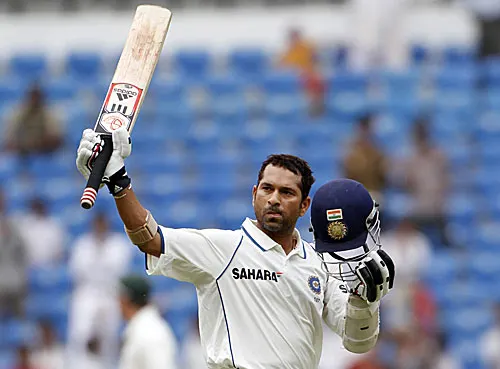 Sachin Tendulkar (India):- Tendulkar, also referred to as the "Little Master," is the owner of multiple records, including the record for most runs in Test cricket (15,921 runs in 200 matches).
Sachin Tendulkar (India):- Tendulkar, also referred to as the "Little Master," is the owner of multiple records, including the record for most runs in Test cricket (15,921 runs in 200 matches).
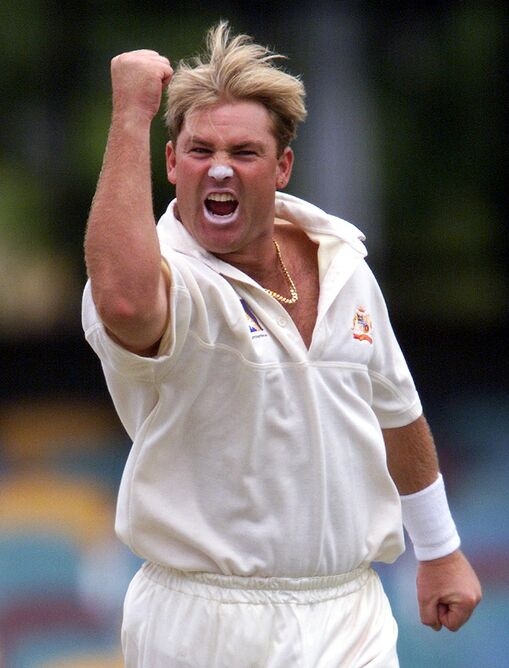 Shane Warne (Australia):- With more than 700 Test wickets under his belt, Warne is regarded as one of the greatest leg-spinners in history and transformed the spin bowling technique.
Shane Warne (Australia):- With more than 700 Test wickets under his belt, Warne is regarded as one of the greatest leg-spinners in history and transformed the spin bowling technique.
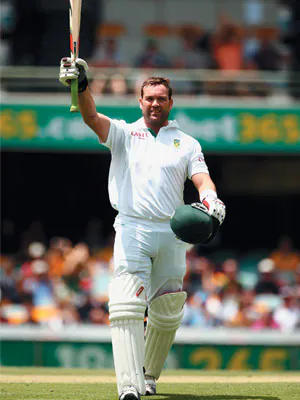 Jacques Kallis (South Africa):- In Test cricket, Kallis was a top-tier all-rounder who amassed over 10,000 runs and claimed over 290 wickets.
Jacques Kallis (South Africa):- In Test cricket, Kallis was a top-tier all-rounder who amassed over 10,000 runs and claimed over 290 wickets.
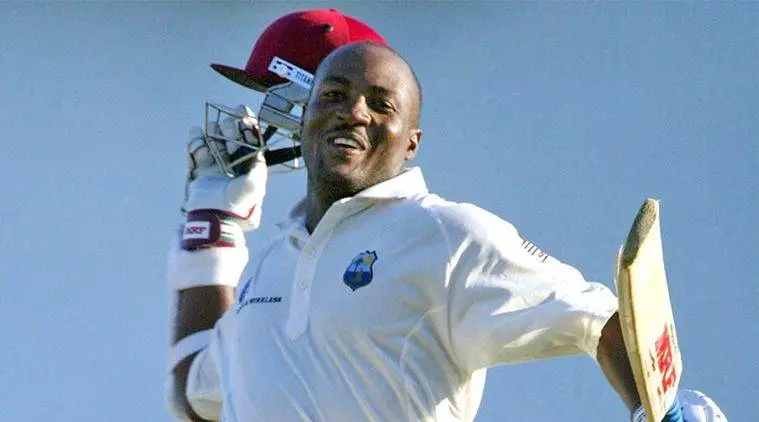 Brian Lara (West Indies):- Known for his graceful stroke play, Lara is a cricket legend and the record holder for the greatest individual score in a Test match (400*) .
Brian Lara (West Indies):- Known for his graceful stroke play, Lara is a cricket legend and the record holder for the greatest individual score in a Test match (400*) .
 Sir Ian Botham (England):- Botham, who is renowned for his exceptional all-around skills, revolutionised the game with his game-winning batsmanship and ball skills, especially during the 1981 Ashes.
Sir Ian Botham (England):- Botham, who is renowned for his exceptional all-around skills, revolutionised the game with his game-winning batsmanship and ball skills, especially during the 1981 Ashes.
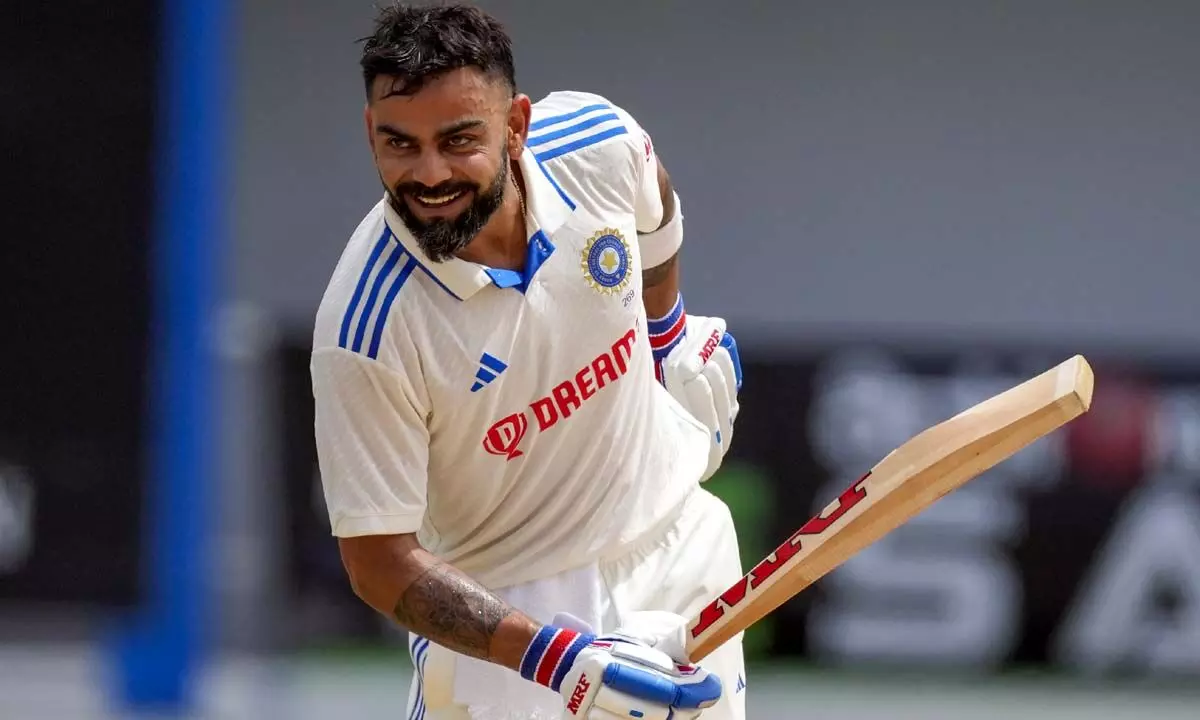 Virat Kohli (India):- One of the greatest of the current period, Kohli has amassed over 8,000 runs in the format, including many hundreds, while maintaining an incredible Test batting average.
Virat Kohli (India):- One of the greatest of the current period, Kohli has amassed over 8,000 runs in the format, including many hundreds, while maintaining an incredible Test batting average.
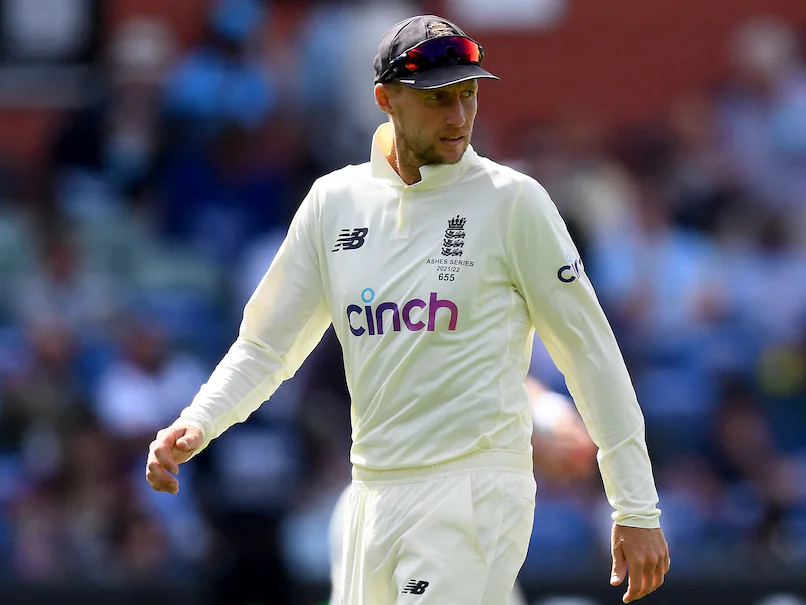 Joe Root (England): One of the best modern batsmen, Root has scored over 10,000 runs and multiple centuries in Test cricket. His leadership abilities have also made him an important role in modern English cricket.
Joe Root (England): One of the best modern batsmen, Root has scored over 10,000 runs and multiple centuries in Test cricket. His leadership abilities have also made him an important role in modern English cricket.
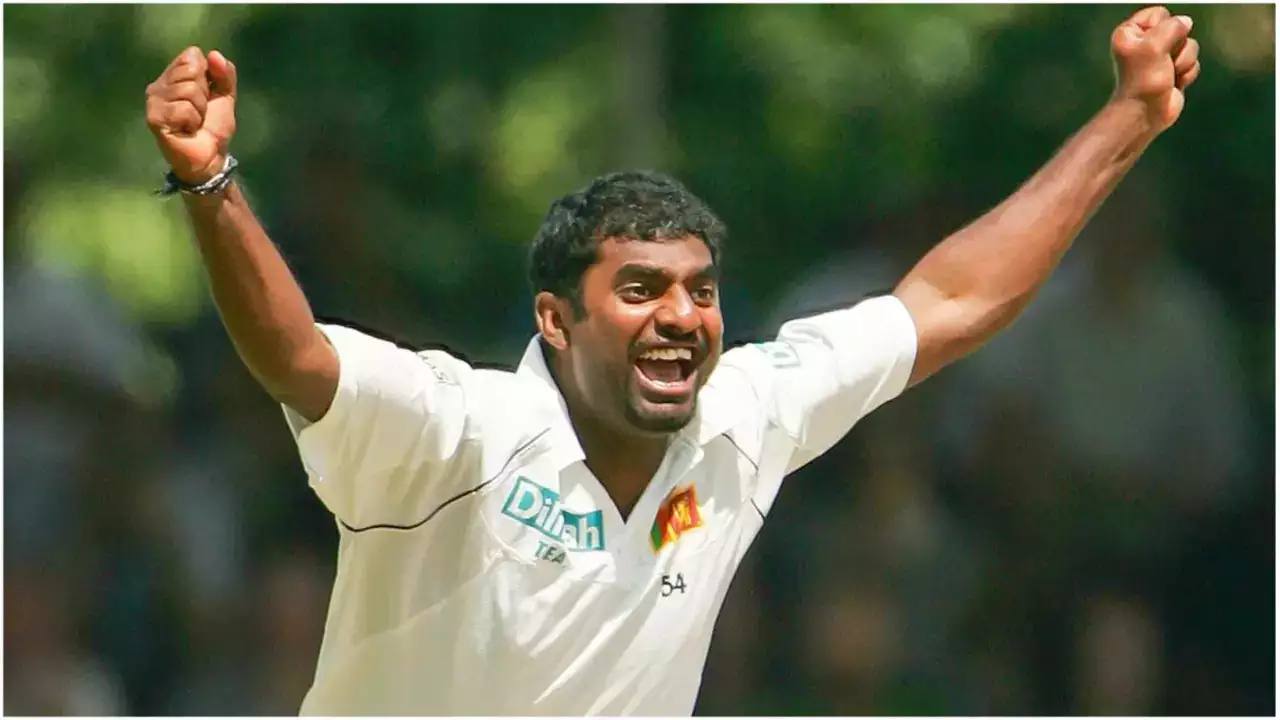 Muttiah Muralitharan (Srilanka):- Muralitharan's spin bowling is renowned in the cricket world, and he holds the record for taking the most wickets in Test cricket with 800.
Muttiah Muralitharan (Srilanka):- Muralitharan's spin bowling is renowned in the cricket world, and he holds the record for taking the most wickets in Test cricket with 800.
Women's Test Cricket Legends
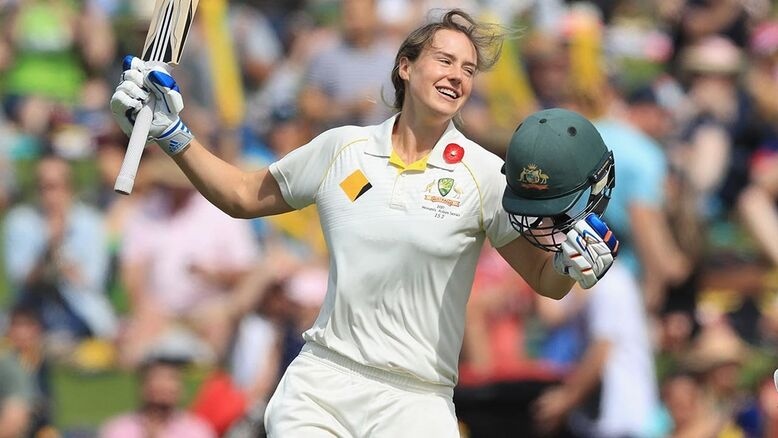 Ellyse Perry (Australia):- she is one of the best female cricket players of the current era because of her all-rounder skills.
Ellyse Perry (Australia):- she is one of the best female cricket players of the current era because of her all-rounder skills.
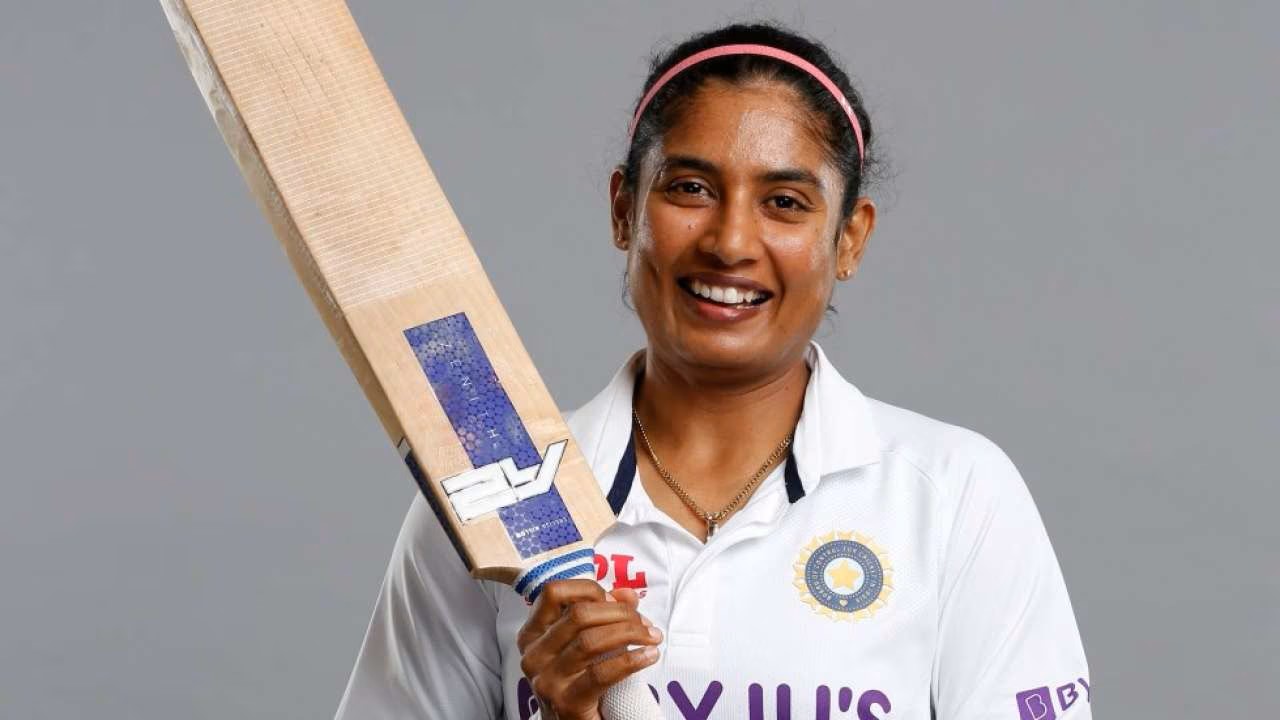 Mithali Raj (India):- Raj is one of the best hitters in women's international cricket and has scored over 10,000 runs, with many of those runs coming in Test matches.
Mithali Raj (India):- Raj is one of the best hitters in women's international cricket and has scored over 10,000 runs, with many of those runs coming in Test matches.
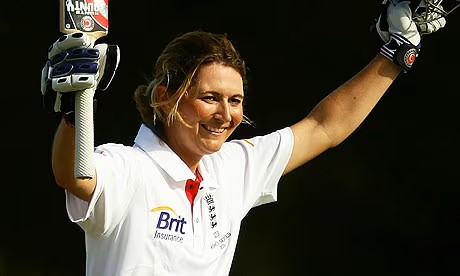 Charlotte Edwards (England):- Edwards is one of the most reliable players in women's Test cricket. She used to lead England and led her team to victory in many types of cricket.
Charlotte Edwards (England):- Edwards is one of the most reliable players in women's Test cricket. She used to lead England and led her team to victory in many types of cricket.
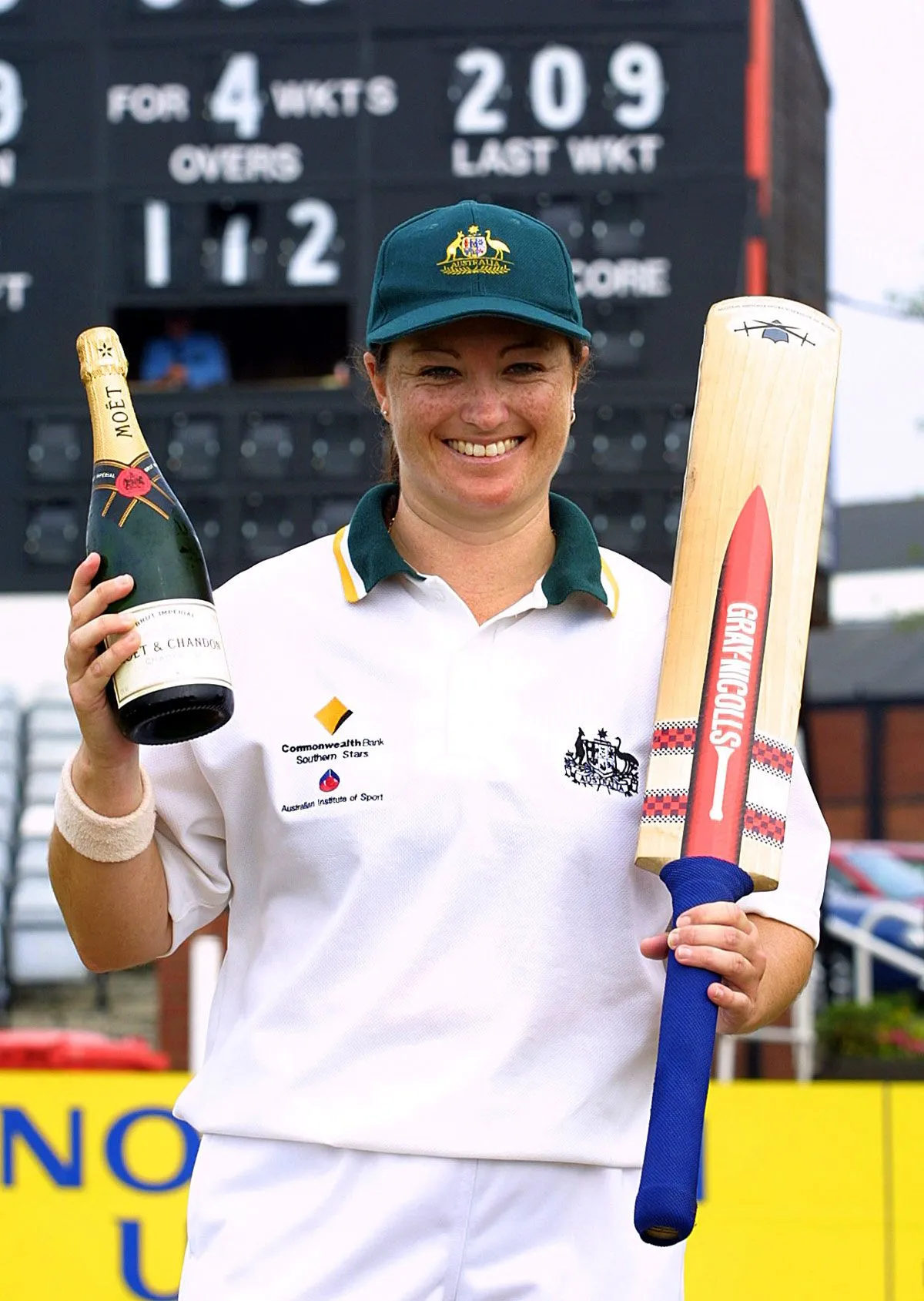 Karen Rolton (Australia):- Rolton was a key member of the Australian women's Test team for many years. She was a strong left-handed hitter and a good bowler.
Karen Rolton (Australia):- Rolton was a key member of the Australian women's Test team for many years. She was a strong left-handed hitter and a good bowler.
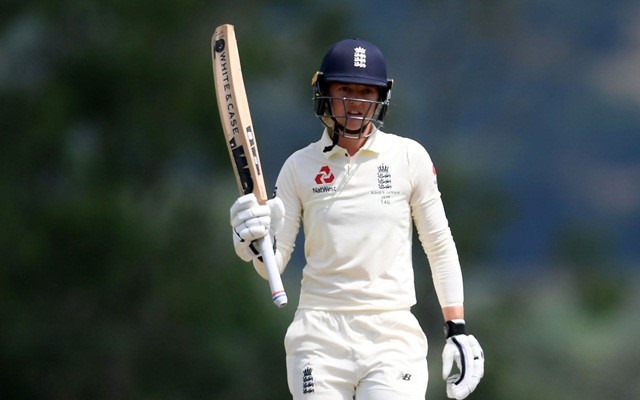 Sarah Taylor (England):- Taylor is known as one of the best women's cricket players ever because of how well she keeps wickets and hits the ball.
Sarah Taylor (England):- Taylor is known as one of the best women's cricket players ever because of how well she keeps wickets and hits the ball.
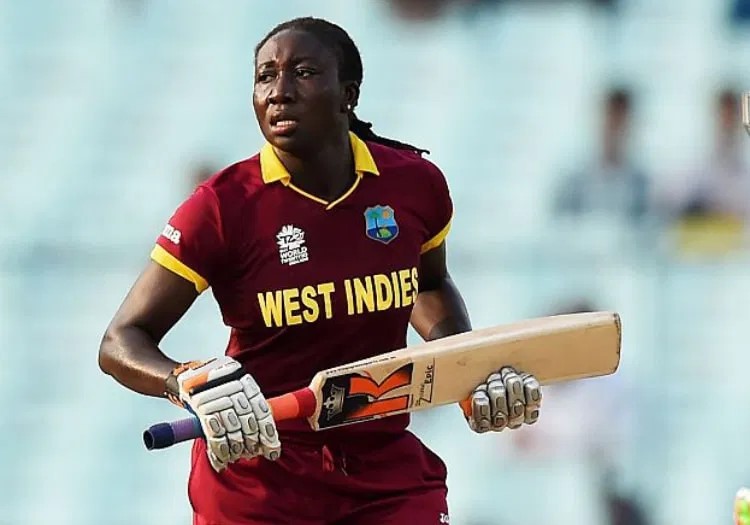 Stafanie Taylor (West Indian):- Taylor is a key player in West Indies cricket because she is one of the best all-rounders in women's cricket. She is great with both the bat and the ball.
Stafanie Taylor (West Indian):- Taylor is a key player in West Indies cricket because she is one of the best all-rounders in women's cricket. She is great with both the bat and the ball.
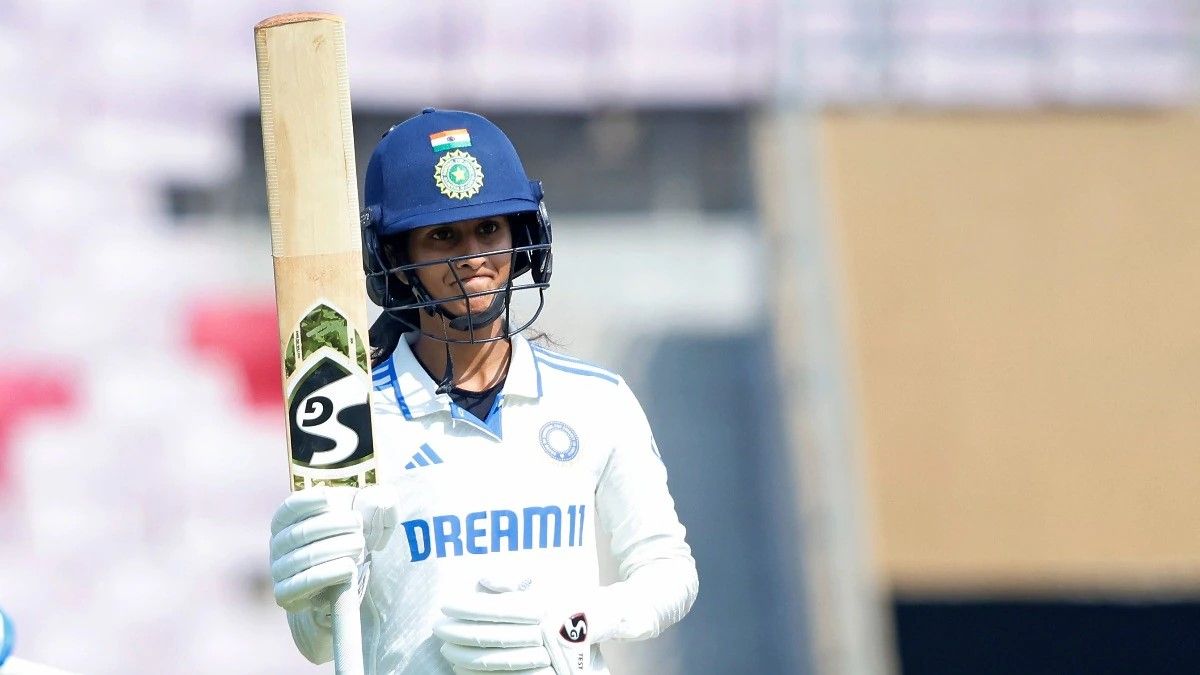 Jemimah Rodrigues (India):- Rodrigues is a young and very good hitter who has already made a name for herself with her great shots in women's Test cricket.
Jemimah Rodrigues (India):- Rodrigues is a young and very good hitter who has already made a name for herself with her great shots in women's Test cricket.
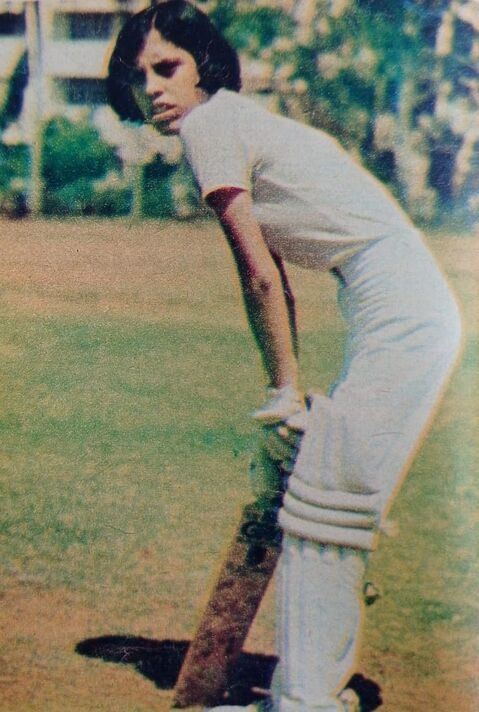 Diana Edulji (India):- Edulji, who used to be leader, was an important part of India's early days in women's Test cricket. She was great with both the bat and the ball.
Diana Edulji (India):- Edulji, who used to be leader, was an important part of India's early days in women's Test cricket. She was great with both the bat and the ball.
Wrap Up
Test cricket is fun and different for both players and fans because it has a long past and a lot of strategic detail. If you know the basic rules, you can fully understand the complex details of this format and the strategic choices that leaders and players make during the game. You can enjoy cricket more and learn more about it if you know the rules of Test cricket. This is true whether you are new to the sport or have been a fan for a long time.
Related Blogs
Introduction to Cricket for Kids: Explore the basics of cricket for kids
Types of Matches in Cricket: Explore How Many Types of Matches in Cricket Exist
History of Cricket: Guide to the Exciting World of Cricket
Top Indian fielders of all time: Top Indian Fielders of All Time
Other Related Sections
NCERT Solutions | Sample Papers | CBSE SYLLABUS| Calculators | Converters | Stories For Kids | Poems for kids | Practice Worksheets | Formulas
Frequently Asked Questions
It takes up to 5 days to play a test cricket match between two teams of eleven players each. Each team gets 2 turns to bat and bowl. One team bats first and tries to score as many runs as possible. The other team tries to get rid of them. There is a change of jobs after the first inning. The winner is the team with the most runs after both innings. The other team can force the follow-on, which means the team playing second has to bat again right away if they fall short by 200 runs or more. There are 4 ways for a match to end: win/loss, draw, tie, or no score because of an interruption.
During a normal 5-day Test match, 450 overs are the most that can be placed. This number comes from the daily distribution of overs. Every day, a maximum of 90 overs are planned to be played, unless bad weather or low light causes them to be stopped.
How it works:
Daily Overs: The bowling team has to finish 90 overs every day within the normal 6 hours of play. This means that 15 overs happen every hour.
Five-Day Total: After five days of 90 overs each, the total is:
Five days times 90 overs is 450 overs.
Additional Time: If play is stopped for any reason, like rain, umpires can extend the game to make up for the lost overs. However, the daily limit of 90 overs must still be met unless special exceptions are made.
Punishment for Slow Over Rate: If teams don't finish the required overs on time, they could be fined or lose points in the ICC World Test Championship.
In Test cricket, the toss is important because it decides which team bats or bowls first, which can change the result of the game. If the Captain wins the toss, they decide whether their team will bat or bowl based on the conditions of the field, the weather, and their own strategy.
If the pitch is new and wet or grassy, bowling first can be helpful because the ball may swing or seam, which makes it hard for batters to hit the ball. On the other hand, batting first is often better on a flat pitch that is supposed to get worse over time so that you can take advantage of the good conditions early in the game and set a high score.
Making the right choice at the toss can set the tone for the whole game and give you a strategic edge. So, the toss isn't just a matter of luck; it can have a big effect on how a team plays and how likely they are to win.
England and South Africans played the "timeless" Test in Durban, South Africa, from March 3–14, 1939. It was the longest cricket test match ever. It was a draw after 9 days because the English players had to leave to catch their boat back to England. It took 43 hours and 16 minutes to play all together, and the total run scored was 1,981 runs.
A test match to go on for 5 days. Every day, there are 90 overs of play, and the game continues until either team completes its innings or is expelled from the competition. In the event that neither team emerges victorious after five days, the game remains a draw.
According to the follow-on rule, the team that is leading by 200 or more runs is allowed to instantly request that the opposing team bat once again. This is in contrast to the standard practice of finishing both innings. This is a strategic move that is undertaken with the intention of bringing the game to a conclusion as quickly as possible.
Breaks are taken during test matches to keep players safe, keep them from getting too tired, and keep the game's structure. Breaks are planned, with a 40-minute lunch break after the 1st session and a 20-minute tea break after the 2nd session. These give players time to rest, refuel, and plan their next move.
Also, breaks for drinks are taken every hour, especially when it's hot, to keep people from getting dehydrated. The break at the end of the day gives teams time to rest the next day. Weather, bad lighting, or illness can cause breaks without being planned. During the tough 5-day style of Test cricket, these breaks help keep performance levels high and make sure that everyone plays fairly.
A declaration happens when the captain of a team decides to end the game before all the batsmen are out. This is usually done when the team thinks they have enough runs to make the other team's goal hard to hit.
In test cricket, important calls like dismissals, no-balls and wides are made by two judges who stand on the pitch. A third umpire could be called in to make decisions that cause a lot of disagreement, like whether a player is out or whether a throw was fair.
CBSE Schools In Popular Cities
- CBSE Schools in Bangalore
- CBSE Schools in Mumbai
- CBSE Schools in Pune
- CBSE Schools in Hyderabad
- CBSE Schools in Chennai
- CBSE Schools in Gurgaon
- CBSE Schools in Kolkata
- CBSE Schools in Indore
- CBSE Schools in Sonipat
- CBSE Schools in Delhi
- CBSE Schools in Rohtak
- CBSE Schools in Bhopal
- CBSE Schools in Aurangabad
- CBSE Schools in Jabalpur
- CBSE Schools in Jaipur
- CBSE Schools in Jodhpur
- CBSE Schools in Nagpur
- CBSE Schools in Ahmednagar
- CBSE School In Tumkur

Call Us to know more about Orchids
Swipe Up

